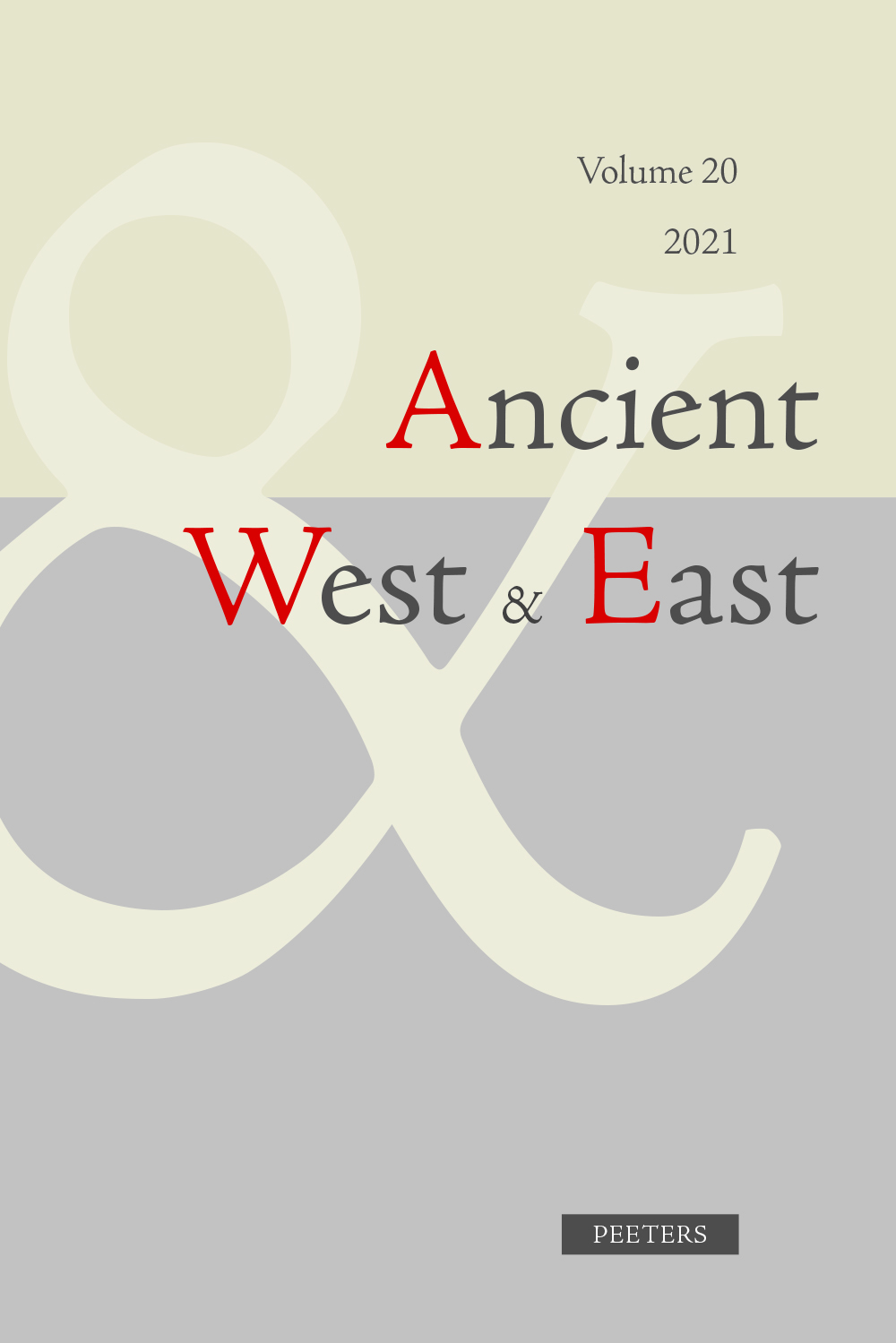 previous article in this issue previous article in this issue | next article in this issue  |

Preview first page |
Document Details : Title: Grecs et Perses sur les Détroits Subtitle: Le démon enchaîné et la démesure du Grand Roi Author(s): DAN, Anca Journal: Ancient West & East Volume: 14 Date: 2015 Pages: 191-235 DOI: 10.2143/AWE.14.0.3108193 Abstract : Key moments in the joint history of Western and Eastern civilisations are staged by the literary evidence on the Straits. Xerxes’ attempt to conquer European Greece, during the Second Graeco-Persian War, starts on the boat-bridge over the Hellespont. Despite the importance of this crossing, Xerxes’ gestures related by Aeschylus and Herodotus are not yet understood. First, it is important to remember that the image of the outrageous Xerxes is a Greek invention. For ancient Iranians the punishment of Bosporus’s salt flows was no insult to divinity, but the enslavement of a bad demon, who tried to prevent Xerxes from conquering the world. The offerings to the gods, which could be understood not only in Achaemenid but also in Greek contexts, confirm Xerxes’ devotion. How the Eastern pious king became the Western symbol of outrageous tyrant? The difference between the Greek and the Iranian way to consider water explains the misunderstanding: Greeks took the flowing channel of Bosporus-Hellespont for a river, to be respected. For the Persians, salt water was contaminated by Evil, the chosen monarch had to defeat. Beyond its historical significance, this story shows how information about the Other could be translated and mistranslated in a contact zone. |
|


